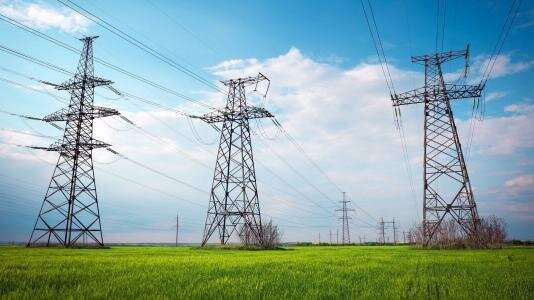Northern Illinois traditionally enjoys four predictable seasons. The winters are notoriously cold and the summers just hot enough to make winter worthwhile. The “shoulder” seasons (spring and fall) predictably and evenly shift in and out of the other two seasons.
However, that climate is changing, with big repercussions for the people who live in the region and the power grid that supports them.
ComEd, the energy company that provides electricity to 9 million people across Northern Illinois, 70% of the state’s population, and the U.S. Department of Energy’s (DOE) Argonne National Laboratory’s Center for Climate Resilience and Decision Science (CCRDS) released a new report that shows northern Illinois at mid-century will be warmer and more humid overall, with longer shoulder and growing seasons.
The report—”ComEd Climate Risk and Adaptation Outlook, Phase 1: Temperature, Heat Index, and Average Wind”—is CCRDS’s first publicly available issue. It presents the most up-to-date understanding of how climate change may affect ComEd’s distribution grid and highlights the need for strategies that adapt to future climate conditions.
The CCRDS is a national center located at Argonne that uses cutting-edge scientific resources to provide information that will help communities identify vulnerabilities and plan for resilience to the impacts of climate change. Key resources include Argonne’s Visualization Lab, Studio for Augmented Collaboration and the Argonne Leadership Computing Facility (ALCF), a DOE Office of Science user facility.
Authors of the study analyzed temperature, heat index and average wind over a historical (1995–2004) and a mid-century (2045–2054) time period to evaluate future climate impacts for the region. They studied how climate change may affect ComEd’s energy demand and created a map that shows other areas of the country where the present-day climate looks similar to northern Illinois’ projected future climate.
“Weather more typical of Saint Louis or Louisville will be more common in northern Illinois by mid-century,” said Jordan Branham, a senior climate risk and resilience analyst in Argonne’s Decision and Infrastructure Sciences division who helped draft the report. “Days when the average temperature exceeds 93 or 94 degrees Fahrenheit will be a more annual occurrence, and higher nighttime temperatures will offer less relief during a heat wave. This could result in lots of air conditioners running at high speed simultaneously, which could stress and overtax the power grid.”
Today’s best practices in grid planning look at historical weather, but climate change will require energy companies like ComEd to look into the future and anticipate unprecedented weather conditions, as new climate scenarios in the region change the risks that ComEd will face.
For example, more extreme weather that results in heavier demand for heating and air conditioning may test the design limits of grid equipment like transformers and conductors and may require a change in system planning criteria to ensure that the electric distribution system can meet customers’ needs. Another example is vegetation overgrowth, which could interfere with ComEd’s infrastructure and require changes in preventive maintenance programs.
“Severe and destructive weather caused by climate change is already impacting our area, and this study gives us a preview of what’s to come—including warmer, more humid conditions that will pose new challenges to the power grid,” said ComEd CEO Gil Quiniones. “Our customers today enjoy record-setting reliability at one of the lowest rates in America; using this localized climate data, we can plan the grid investments necessary to ensure we continue to deliver reliable, resilient energy to our customers, even as the grid must handle more severe weather and to serve new needs as customers adopt electric vehicles and heat pumps.”
A desire to understand and prepare for these changes led ComEd to partner with the decision science and infrastructure experts of CCRDS and researchers in the laboratory’s Environmental Science division. The team, led by Rao Kotamarthi, a senior scientist as well as chief scientist within that division, developed the downscaled climate projections and analysis. The team also tapped the supercomputing resources of the ALCF.
A clearer lens, more exact areas
Typical climate models, which use simulations of Earth’s climate to forecast future conditions, have a resolution of about 100 km-by-100 km. This means scientists can evaluate broad, statewide trends but they don’t allow for local detail.
Argonne’s advanced climate modeling uses supercomputers at the ALCF to dynamically downscale these global models. The resulting models boast a resolution of 12 km-by-12 km, which means they can focus on climate affecting a much smaller area, such as a city. That resolution will grow even more coherent. Argonne’s next climate models will have a resolution closer to 4 km-by-4 km, which approaches the size of a large urban neighborhood or small rural town.
This level of hyper-specificity is highly useful to ComEd. The electric company can use the knowledge to better plan for northern Illinois’ anticipated energy needs, guard against the adverse impacts of climate change and continue to deliver reliable power to customers across northern Illinois in the decades ahead.
ComEd and CCRDS have already begun working together on phase two of the study. They will use a similar approach to dive more deeply into the future impact of other climate-related variables such as flooding, precipitation, ice storms, lightning and thunderstorms. The CCRDS, in partnership with AT&T and the Federal Emergency Management Agency (FEMA), is making large portions of its advanced climate modeling available to other regions through its Climate Risk and Resilience Portal.
“The collaboration between Argonne and ComEd is a great example of the value our national laboratories provide to industry and communities,” said Branham. “ComEd has been an engaged partner that wants to ensure its grid is resilient to climate change and reliably serves communities for decades.”

